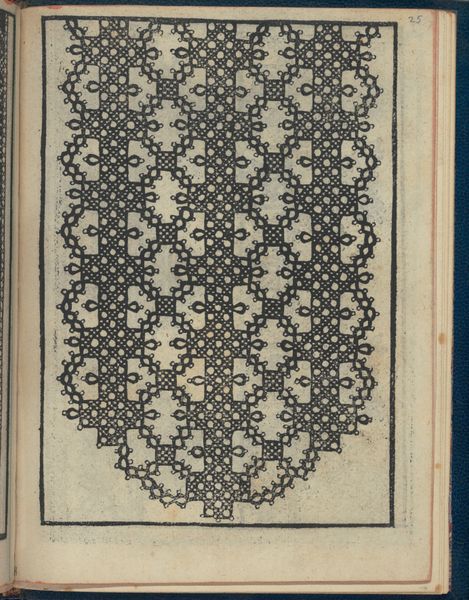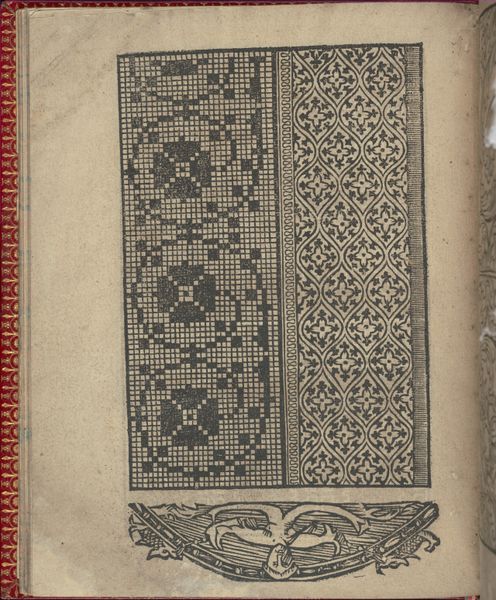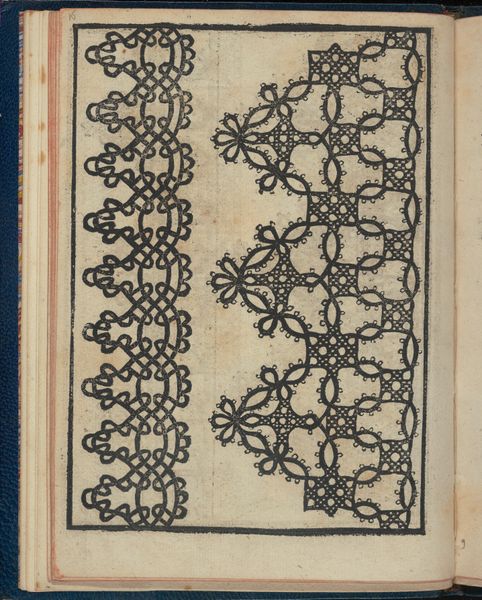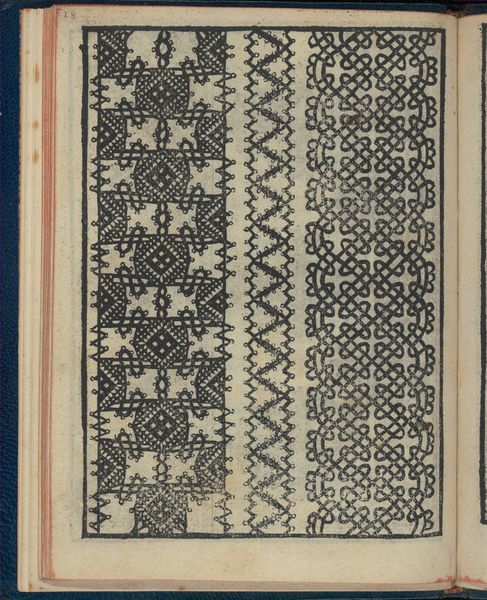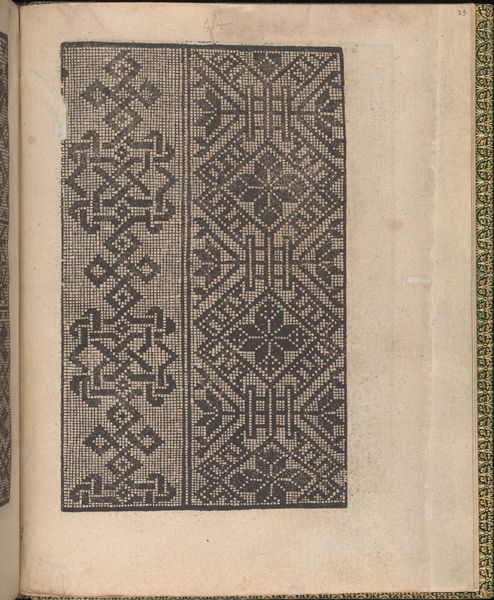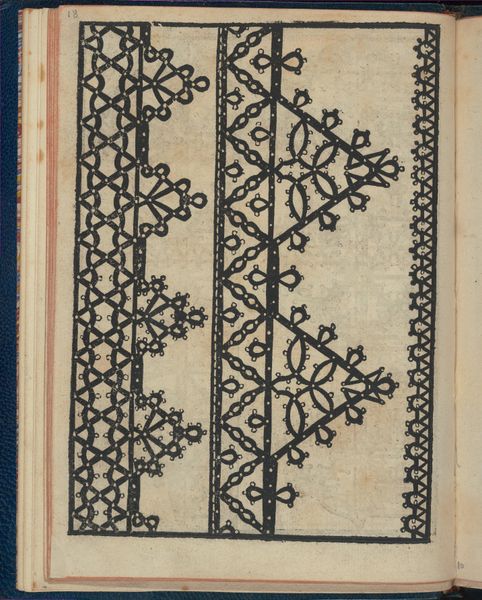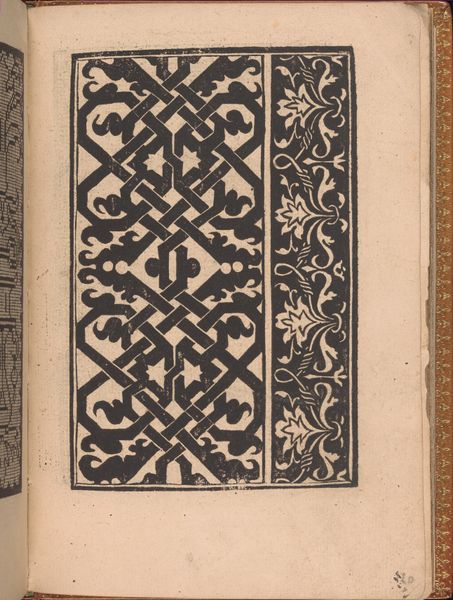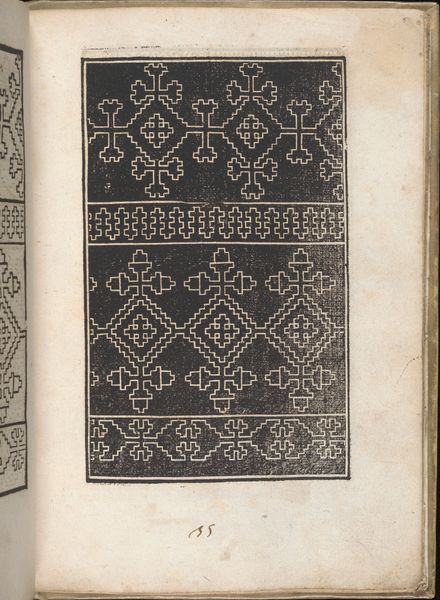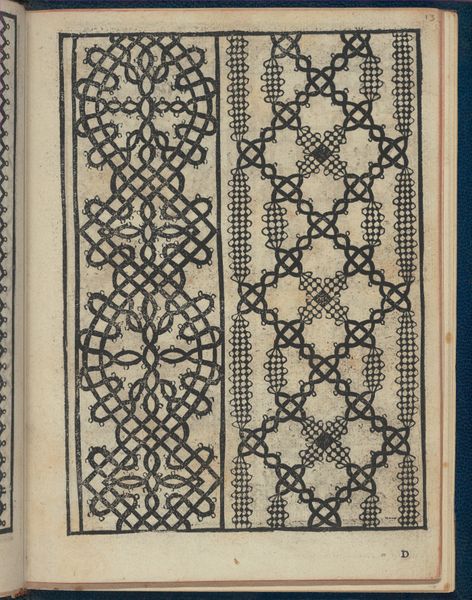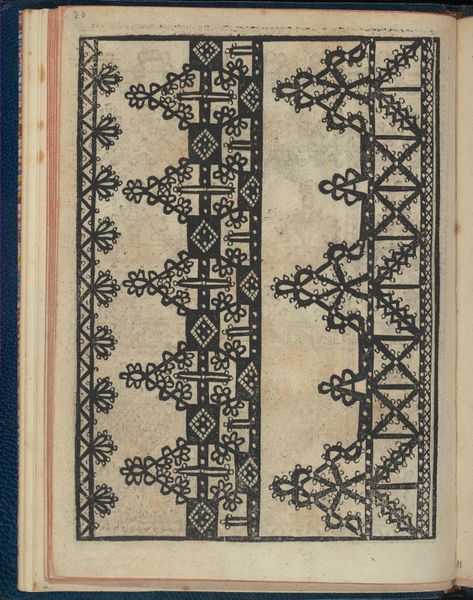
Le Pompe: Opera Nova, page 4 (verso) 1557
0:00
0:00
drawing, graphic-art, ornament, print, paper
#
drawing
#
graphic-art
#
ornament
#
toned paper
#
medieval
# print
#
book
#
paper
#
11_renaissance
#
geometric
#
decorative-art
Dimensions: Overall: 8 1/16 x 5 7/8 in. (20.5 x 15 cm)
Copyright: Public Domain
Curator: Take a look at this fascinating page from "Le Pompe: Opera Nova," printed in 1557 by Giovanni Battista and Marchio Sessa. It's an early example of printed lace patterns. What's your immediate reaction? Editor: Intricate. Almost dizzying, but in a good way. The density of the black lines against that toned paper creates a hypnotic effect. It’s a visual maze. I can see how this was once very functional and aesthetically quite advanced. Curator: It's more than just pretty pictures. This was essentially a pattern book, guiding lacemakers in creating intricate needle lace, "punto in aria" – stitches in the air. Consider the immense skill and labor involved. Each pattern represents hours upon hours of painstaking work by artisans, predominantly women. Editor: Absolutely. And this book is also an early example of the mass production and dissemination of designs that could shape labor on an unprecedented scale. These aren’t unique objects in that sense, and yet there's incredible sophistication in translating three-dimensional possibilities into graphic form. Do we know who the intended audience for these books was? Was it exclusively for professional lace makers? Curator: These books probably found their way into the hands of noblewomen as well as professional artisans. Imagine, a wealthy woman commissioning a gown with lace directly inspired by this page. Talk about conspicuous consumption merged with skilled handiwork! It's such a potent mix. Editor: And thinking about materials - the quality of the thread, the availability of paper for printing – it really speaks volumes about access and social hierarchies of the time. This book, at the moment of its publication, became both a creative force and a powerful form of propaganda. I want to dive in a bit to see where these patterns migrated; perhaps a globalized product by any other name… Curator: A truly interesting observation and a vital link between social context and production that often goes unnoticed. So, the next time you admire intricate lace, think of the hands that brought it into being, guided by patterns meticulously preserved in volumes like this one. What do you see and how might that illuminate history?
Comments
No comments
Be the first to comment and join the conversation on the ultimate creative platform.


